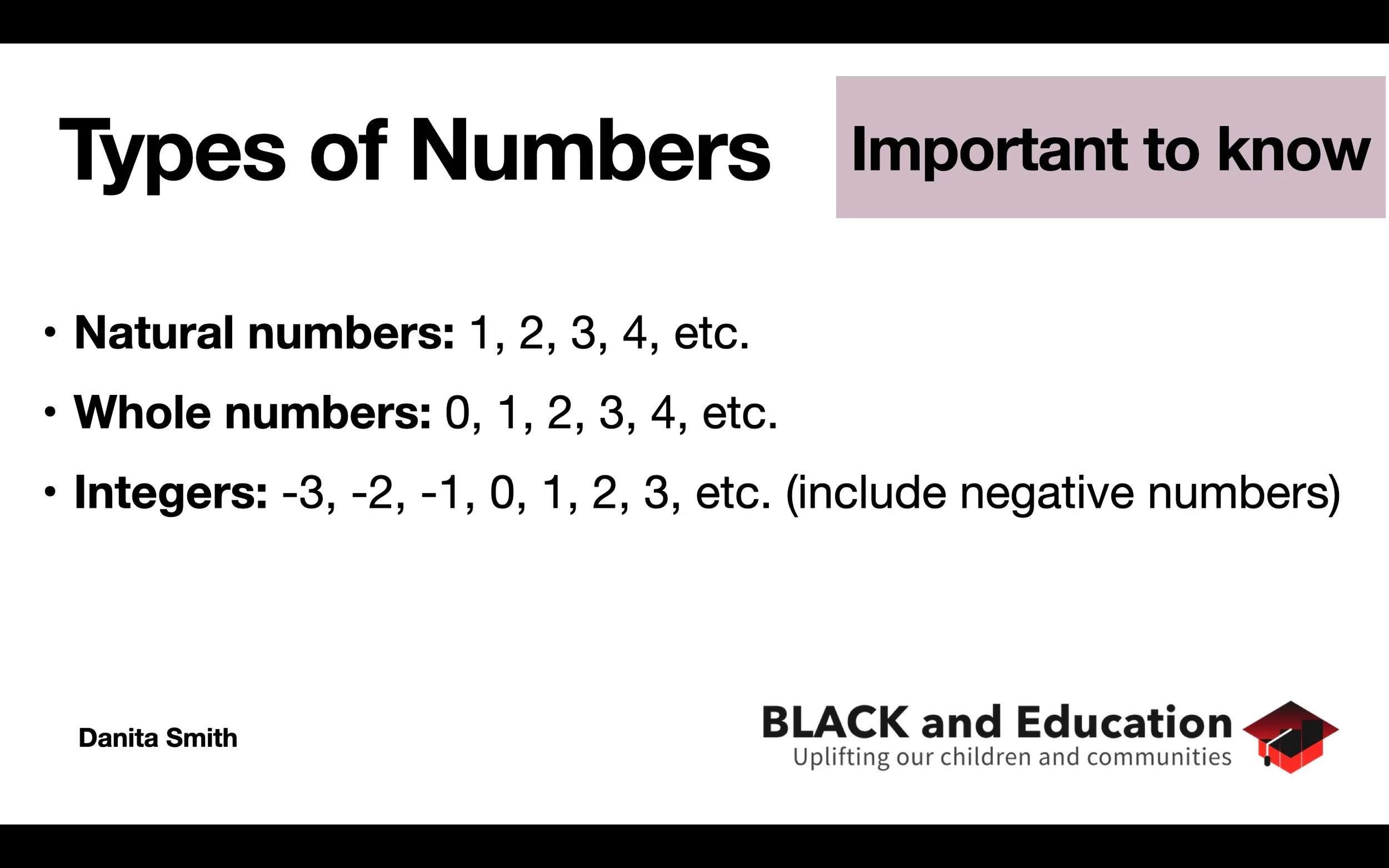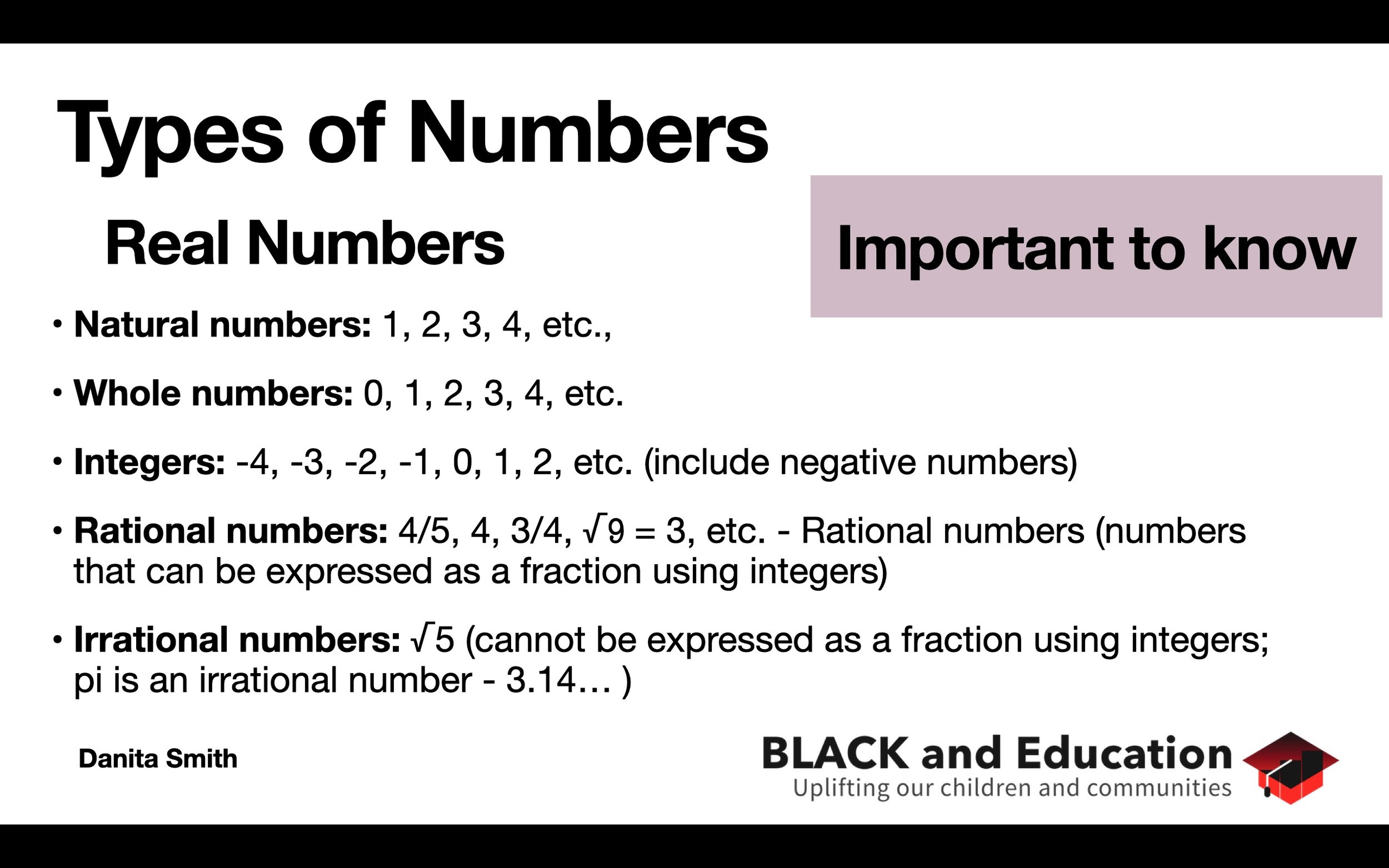Types of Numbers: Natural, Whole, Integers, Rational and Irrational
This may seem like a silly thing to do, but numbers can actually be categorized into different types and you will hear these types often in classes, so it’s great to get to know them.
Natural numbers are also called counting numbers. They are the numbers you would “naturally” use when you count: 1, 2, 3, 4, etc.
They do not include 0 or negative numbers.
Whole numbers include natural numbers, but also include the number 0.
Integers include natural numbers and 0, but they also include negative numbers such as: - 3. - 2, - 1, 0, 1, 2, 3, and so on.
Note: children may not learn about rational (below) and irrational numbers until higher grades, but here is a preview.
Rational numbers are numbers that can be expressed as a fraction with integers. So 2/3 is a rational number. Just think about it…expressing this number with simple integers, makes sense—it’s rational!
Irrational numbers can’t be expressed as a fraction using simple integers. Pi, for example, is 3.141592653589… You can’t express that as a fraction with integers, yet it’s a real number! For example, pi is the ratio of the circumference (the perimeter) of a circle to its diameter (a line that passes through the center of the circle). So, the circumference of a circle is more than 3 times its diameter (3.14159…times, to be more exact).
All of these are real numbers—they are numbers that will come up in everyday life and in your courses on mathematics, so get to know them.




